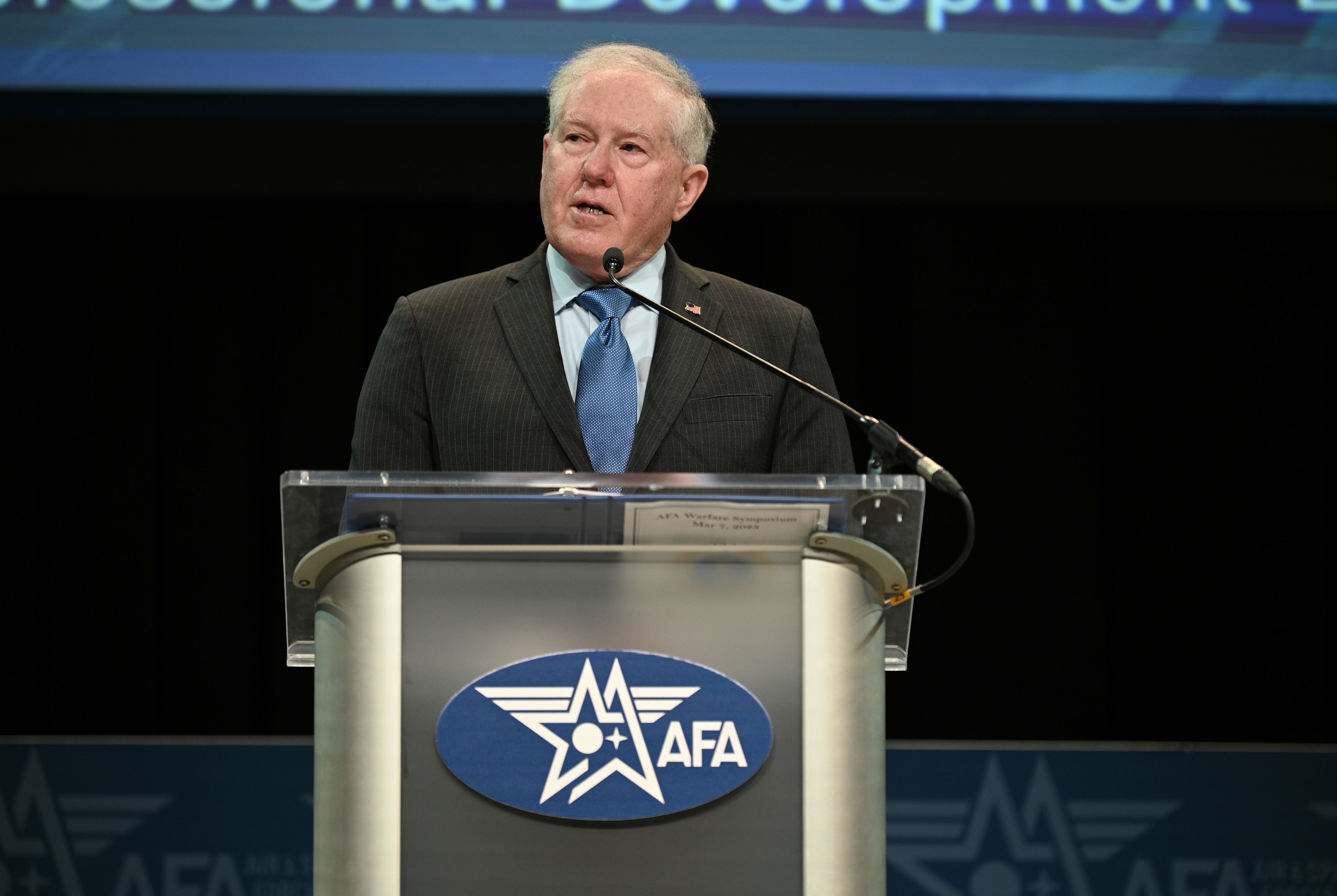WASHINGTON — The U.S. Department of Defense’s fiscal 2024 budget request includes a classified effort to integrate air and space sensors that can track moving targets, according to the Air Force’s top civilian official.
The funding request, which the Biden administration is expected to submit to Congress this week, includes “designs and plans” for the software and communications backbone that will be needed to use both air and space sensors to track targets, Air Force Secretary Frank Kendall said during the Air and Space Force Association’s Air Warfare Symposium in Colorado.
“The details are classified, but with support from Congress, we should be able to move forward with a resilient suite of airborne and space-based sensors and the associated processing and data distribution needed to perform those functions,” Kendall said at the Tuesday event.
Aircraft such as the E-3 Sentry airborne warning and control system and the E-8C Joint Surveillance Target Attack Radar System traditionally perform this function for the department. Meanwhile the intelligence community relies on spy satellites from the National Reconnaissance Office and the National Geospatial Intelligence Agency to surveil targets from space.
Over the last few years, the Air Force, the Space Force and the intelligence community have been developing plans to better integrate those capabilities, including new sensor capabilities. Former Chief of Space Operations Gen. Jay Raymond said last year he anticipated the service’s fiscal 2024 budget would include funding for that mission, and Kendall’s comments appeared to confirm that prediction.
“We have worked closely with the intelligence community to define and budget for a moving target sensor system designed and built for the real-time dynamic warfighting mission, while still providing seamless support to intelligence functions,” he said. “The Space Force continues to develop additional tactical space-based sensing systems to enable expansion to additional classes of targets.”
Kendall also indicated that the Space Force’s budget request will “continue to accelerate” the service’s plans for the next-generation of missile warning and tracking satellites and ground systems. The Space Force has projected it would need about $3.9 billion in fiscal 2024 to support its strategy for a more resilient fleet of missile tracking satellites with diverse sensor capabilities that reside in multiple orbits.
“While some programs are classified, I can assure you that the FY24 budget includes funding to address each of the Space Force’s requirements,” he said.
Courtney Albon is C4ISRNET’s space and emerging technology reporter. She has covered the U.S. military since 2012, with a focus on the Air Force and Space Force. She has reported on some of the Defense Department’s most significant acquisition, budget and policy challenges.





